Builders Outlook - 2025
Published by the El Paso Association of Builders: 
National, State and Local Home Building Industry News
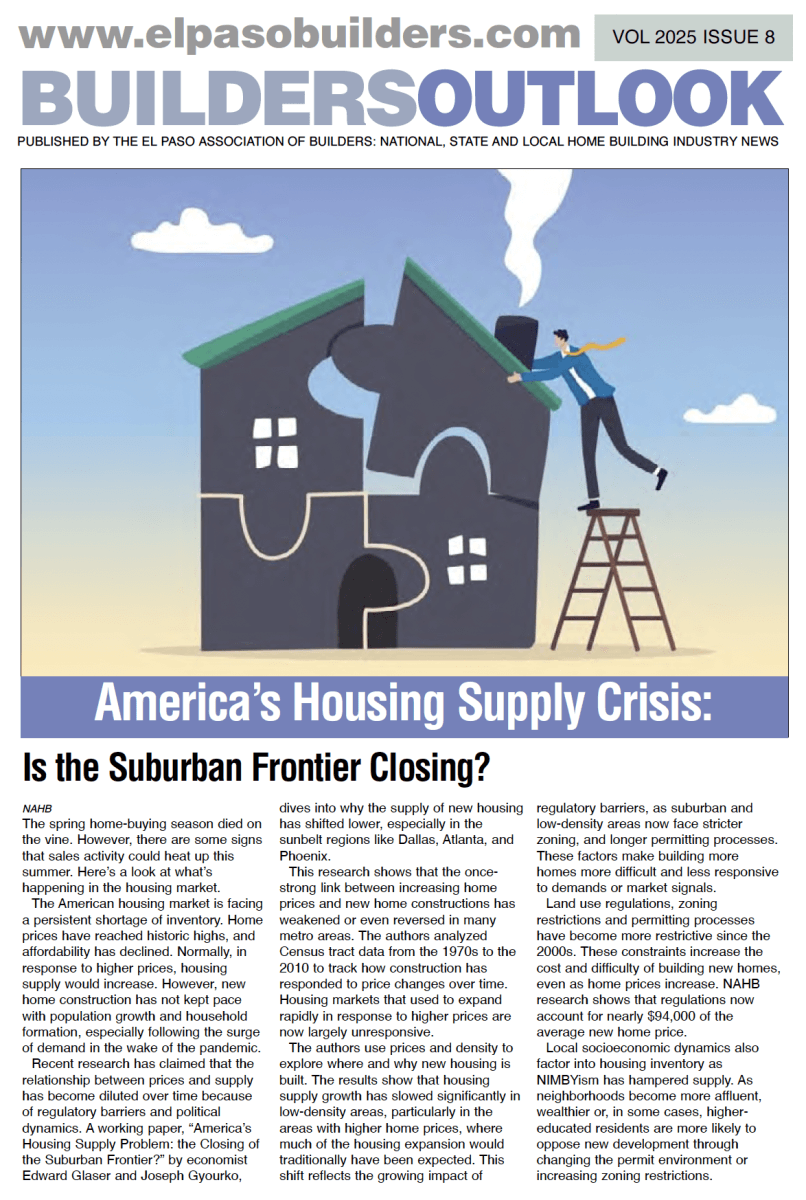 Vol. 2025 - Issue 8
Vol. 2025 - Issue 8
Download the Builders Outlook app to see the current issue or click button below to view articles.
In this issue:
• U.S. Lumber Reliance
• Economic Outlook
• NAHB Market Update
Read Articles
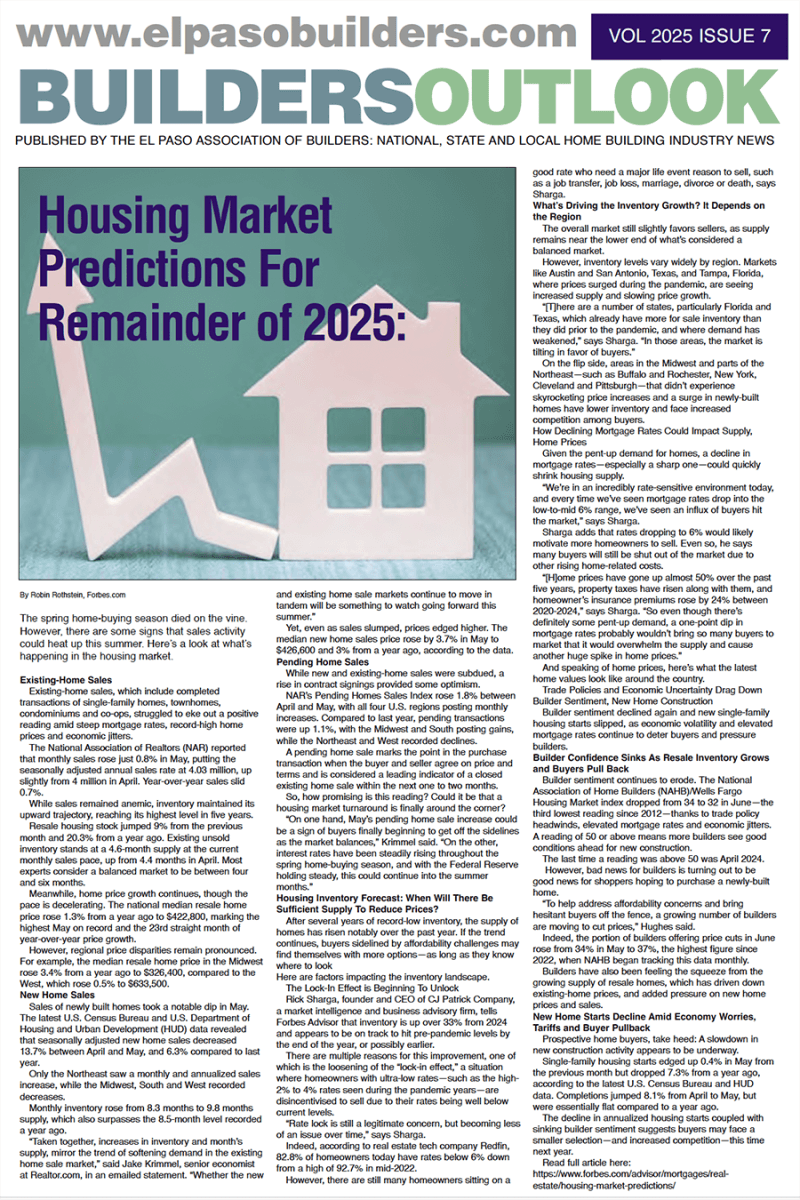 Vol. 2025 - Issue 7
Vol. 2025 - Issue 7
Download the Builders Outlook app to see the current issue or click button below to view articles.
In this issue:
• Housing Market Predictions for Remainder of 2025
• Spec Building New Norm
• NAHB Market Update
Read Articles
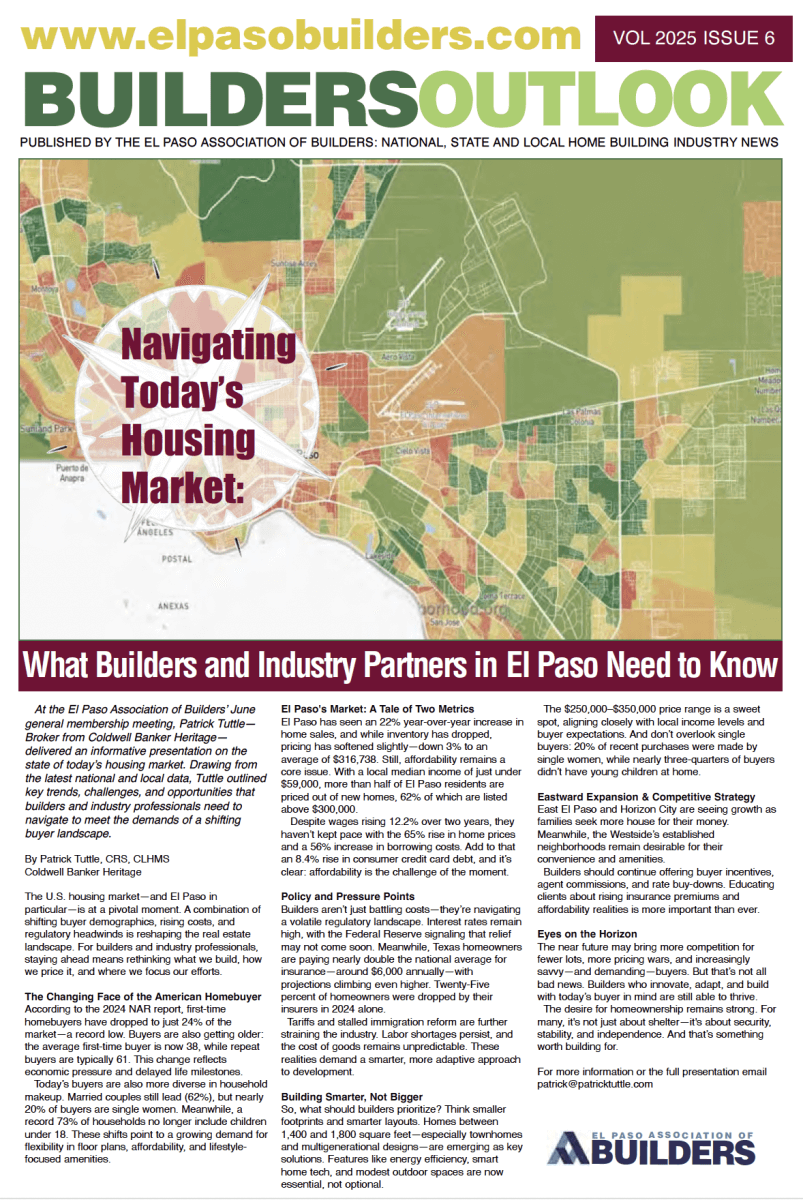 Vol. 2025 - Issue 6
Vol. 2025 - Issue 6
Download the Builders Outlook app to see the current issue or click button below to view articles.
In this issue:
• Navigating Today's Housing Market in Our Region
• Western Governor's Association Unveils Housing Plan, Includes NAHB Priorities
• Economic Outlook
Read Articles
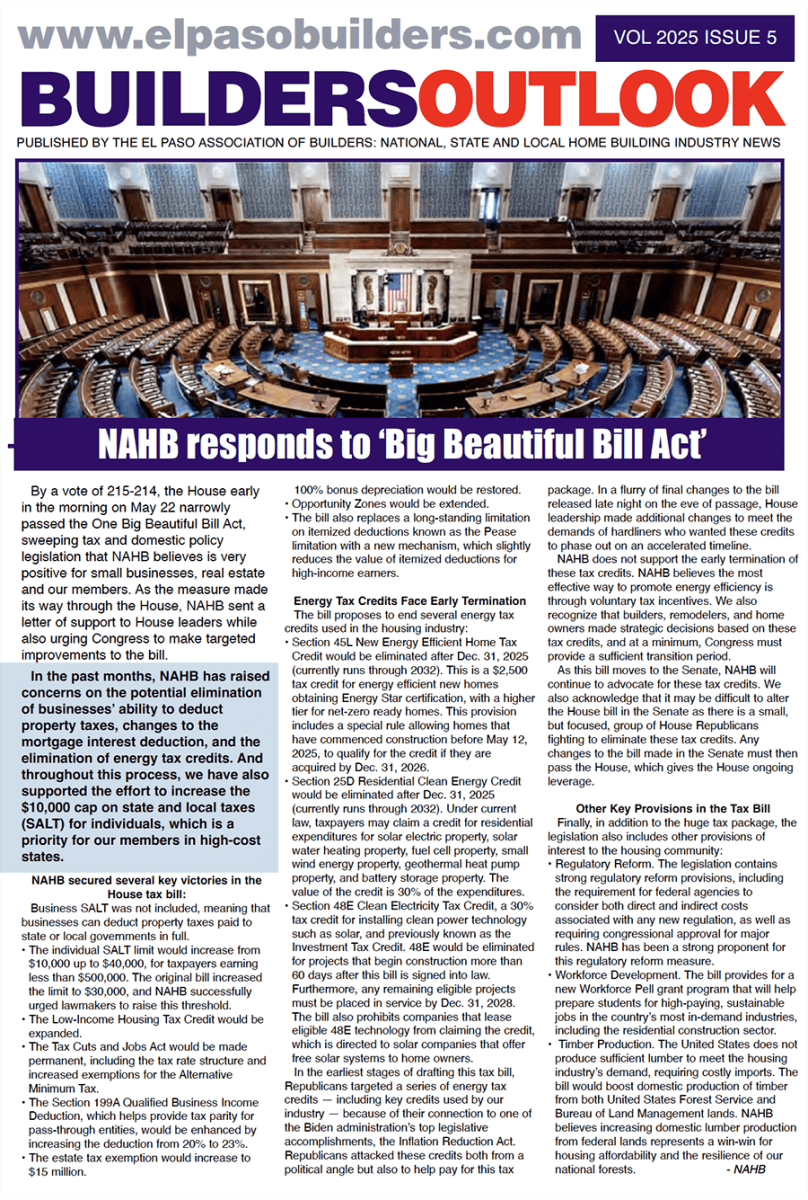 Vol. 2025 - Issue 5
Vol. 2025 - Issue 5
Download the Builders Outlook app to see the current issue or click button below to view articles.
In this issue:
• NAHB responds to 'Big, Beautiful Bill act'
• New generation of home buyers eschew starter homes for more permanent options
• Federal Court Blocks Most of Trump’s Tariffs, Market Uncertainty Remains
Read Articles
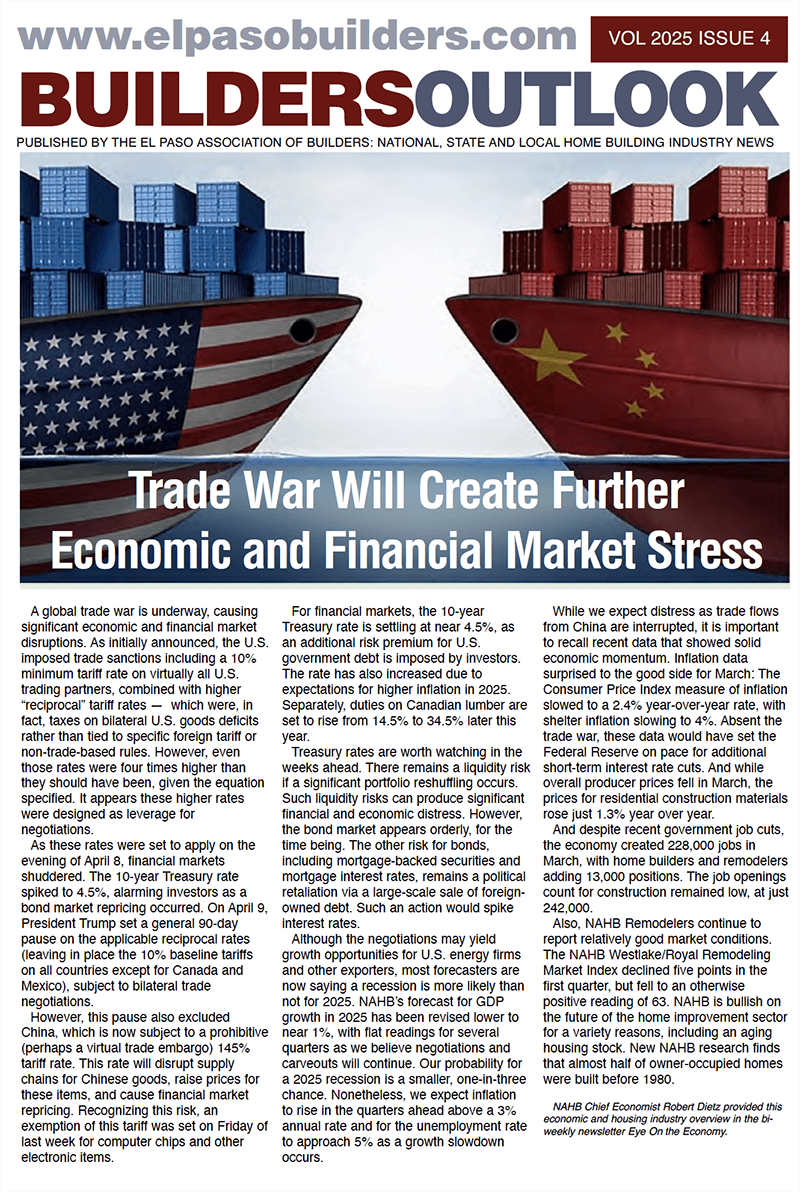 Vol. 2025 - Issue 4
Vol. 2025 - Issue 4
Download the Builders Outlook app to see the current issue or click button below to view articles.
In this issue:
• Trade War will Create Further Economic and Financial Market Stress
• Rethinking Pricing as Tariffs Hit
• Can Texas Eliminate Property Taxes?
Read Articles
Now available to download, get the Builders Outlook app.
